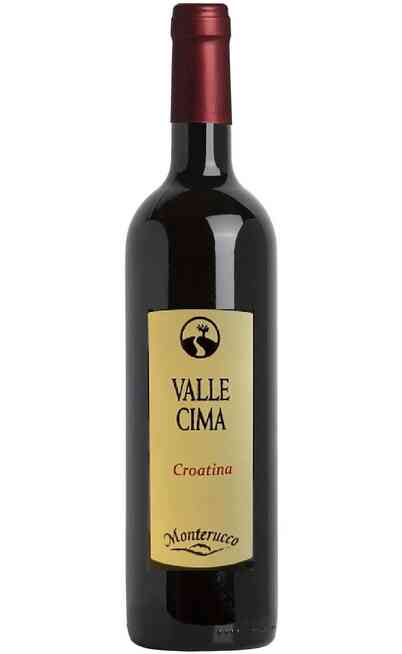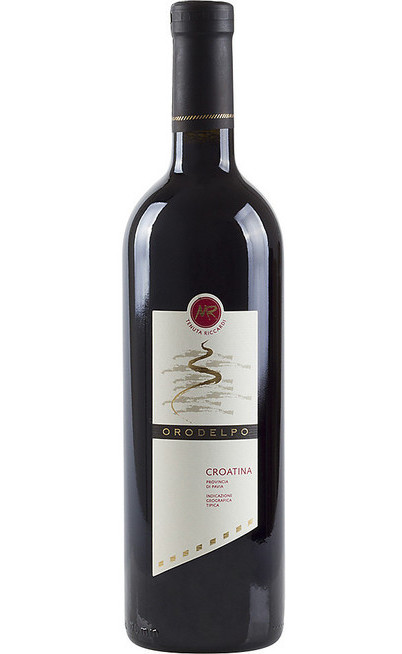
General description of wine and territory Croatina
The wine Croatina IGP, boasts an important honor concerning the protected geographical indication inherent in its production, which in Lombardy, takes place in the province of Pavia. The wine comes from the homonymous Croatina vine. The Grape has certain and rather remote origins, which date back only to the second half of the '800, but there are also traces of it in the Versa Valley and in the area of Roverscala since the Middle Ages. It was also mentioned by Di Rovasenda (1877), Molon (1906), Demara and Leardi (1875). It is often confused with la Bonarda, which grows autochthonously in the same territories and is also cultivated in Novara, but in reality there are no common origins between the two vines. Its main characteristic is to have a remarkable resistance to iodine, and this has favored the spread of Croatina throughout Oltrepo and Novara, even at the expense of vines of greater value but more' sensitive to diseases such as Vespolina or Nebbiolo (Spanna).
Related wines and products with the same grapes
Croatina grape is usually vinified with grapes from other varieties and the best results are generally obtained with Bonarda Piemontese and Vespolina, in Novara and in Oltrepo with Barbera and Uva Rara&rdquo, to which Croatina brings softness and color. The wine produced with Croatina in purity has a low content of tannins, this allows to generate a ready-to-drink wine, immediately, with a lack of "body", but with intense aromas of red fruits.
The main appellations in which the vine is present concern exclusively the regions of Northern Italy and in particular Lombardy with the province of Pavia, where you can find most of the DOC denominations: Bonarda dell'Oltrepò Pavese DOC, Buttafuoco dell'Oltrepò Pavese or Buttafuoco DOC, Casteggio DOC, Oltrepò Pavese DOC, San Colombano al Lambro or San Colombano DOC, Sangue di Giuda dell'Oltrepò Pavese or Sangue di Giuda DOC. In Piedmont where the denominations are slightly lower in number but still belonging to the DOC denomination: Bramaterra DOC, Cisterna d'Asti DOC, Colli Tortonesi DOC, Colline Novaresi DOC, Coste della Sesia DOC, Piemonte DOC, Valli Ossolane DOC. and finally in Emilia Romagna where the DOC are only four: Colli di Parma DOC, Colli di Scandiano e di Canossa DOC, Colli Piacentini DOC, Gutturnio DOC. Finally, the wines with IGT certification (Typical Geographical Indication) that are vinified with Croatina grapes, only found in Lombardy, are the following: Province of Pavia IGT, Ronchi Varesini IGT, Terre Lariane IGT. You can find them all on our online wine shop, catalogued by region, type and certification of membership. Take advantage of low prices and promotional offers.
The grapes used for the production of Croatina wine
The wine ROSSO, Croatina IGP is vinified with 100% Croatina grapes.
The main production techniques that adapt to the production of this fresh and young wine, provide in the vineyard: a constant, accurate and careful work as only organic cultivation requires; the grapes, exclusively cultivated on the farm and harvested by hand, are pressed by destemming in contact with the skins. Fermentation, maturation and aging take place in stainless steel tanks at controlled temperature. Finally, decanting and bottling are arranged in spring before marketing.
The varietal characteristics of the Croatina grape highlight the intense black color of the berry. The size of the medium or often even medium leaf – small, elongated and pentagonal, pentalobate or trilobed. The Cluster has instead large size, conical shape and strongly elongated, very winged and overall of medium compactness. The berry, also medium-sized, has a fairly regular spheroidal shape, the skin is very pruinose, intense bluish color tending to black if little exposed, the consistency is thick and leathery.
The main production characteristic of the Croatina grape variety sees a fairly high annual production but fluctuating over time, prefers rather deep soils, frank & ndash; clay and silty or clayey, little calcareous. The cultivation and breeding of Croatina see a late ripening of the vine that prefers hilly soils exposed to the south to marly calcareous mixture; but it also bears well ripening more delayed on less sunny slopes. The best breeding system is guyot while it does not produce and does not spread on spurred cordon.
Analysis of Croatina wine
The red Croatina IGP wine, still, has a ruby red color and purple reflections that can be fully appreciated if crossed by light. The perfume, appreciable by the olfactory examination is broad and referable to a wide floral bouquet. On the palate, on the other hand, it has a prolonged persistence, very dry, almost dry, and very balanced between flavor and structure.
Recommended combinations with Croatina
Croatina IGP is a wine for the whole meal. However, it is particularly suitable in combination with cold cuts and medium-aged cheeses.
Recommended serving temperature and glass with Croatina
Recommended serving temperature is 16° degrees, maximum 18° in older versions. It should be served in moderately ample glasses, such as those of the type “Ballon” or those of the type “Bordeaux Rosso” which allow the nose to concentrate the olfactory qualities of wine.




